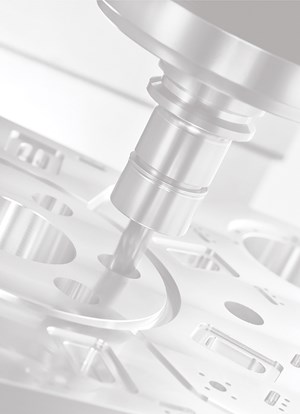Four-, Five-Axis HMCs Fit Multiple Applications, Materials
Burkhardt+Weber’s MCC series of HMCs, with axis travels measuring 1,100 × 900 × 1,100 mm, is suited for standalone machining needs and linked production lines.
Share


Burkhardt+Weber’s MCC series of HMCs, with axis travels measuring 1,100 × 900 × 1,100 mm, is suited for standalone machining needs and linked production lines. It fits most machining applications and materials, and addresses four- and five-axis needs.
The five-axis MCC features a rigid, dynamic A-axis concept with a 100-percent duty rated 30-kW motor spindle. It has a large swivel range for maximum flexibility, offering 10,000 rpm and a low-end torque of 300 Nm. An easy-access twin pallet makes it ideal for loading via overhead crane or gantry for payloads as heavy as 1,500 kg. It integrates all benefits of the company’s larger machines, such as accuracy, high stiffness and reliability.
The geared-spindle four-axis machine, with 41 kW and 1,300 Nm of power, addresses high-torque machining needs. Central data systems can use the machines’ networked status information to predictively organize production and maintenance to reduce downtime and ultimately increase machine availability. The MCC series is ready for digital networking in self-organizing production processes and can be fully integrated into the customer’s manufacturing execution system infrastructure.
Related Content
-
Inside a CNC-Machined Gothic Monastery in Wyoming
An inside look into the Carmelite Monks of Wyoming, who are combining centuries-old Gothic architectural principles with modern CNC machining to build a monastery in the mountains of Wyoming.
-
Addressing Manufacturing Challenges with Automation
GrayMatter Robotics’ Physical AI robotic cells for manufacturing offer immediate impact and results.
-
Additive/Subtractive Hybrid CNC Machine Tools Continue to Make Gains (Includes Video)
The hybrid machine tool is an idea that continues to advance. Two important developments of recent years expand the possibilities for this platform.



















